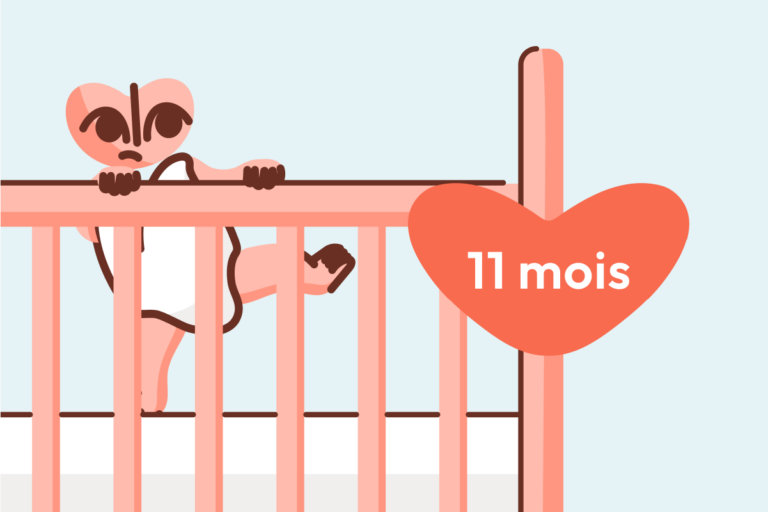Imagine lying awake at night, every distant honk or slight creak pricking your ears—or, on the contrary, imagine needing three alarms, a brightening dawn, and some energetic coaxing to greet the morning. Many parents find themselves navigating these two extremes daily, wondering how light or heavy sleeper tendencies can shape every bedtime, school morning, or family holiday. Whether your child springs out of bed at first light or snoozes blissfully through the morning chaos, unravelling what determines these patterns can seem both mysterious and daunting. Understanding what underlies these differences goes far beyond curiosity: it can directly impact your child’s daily energy, school performance, and even the family’s sleep harmony. From brain activity to environmental influences, sleep sensitivity deserves attention, not just resignation or frustration. Let’s explore how to decode your family’s unique sleep rhythm, and how to nurture restful nights for every sleeper—light or heavy.
What Does It Mean to Be a Light or Heavy Sleeper?
Key Characteristics: Who Wakes, Who Snoozes?
To distinguish a light or heavy sleeper, parents often observe: does the slightest sound—perhaps a door closing or a faint barking—jolt their child from sleep? Or, does even a loud thunderstorm go unnoticed by another, who keeps peacefully dozing? The arousal threshold—a medical term for how strong a stimulus must be to wake someone—is much lower in light sleepers. These individuals are naturally more sensitive to noise and environmental changes during sleep. Sleep scientists call it sleep fragmentation: light sleepers have more micro-awakenings and less time in the deep, refreshing stages known as slow-wave sleep. Conversely, heavy sleepers exhibit a robust resistance to disturbances, often resting through household commotion or even alarms, thanks in part to sleep spindles—brief bursts of brain activity in NREM sleep that shield against sound.
For families, the consequences ripple beyond simple sleep depth. Light sleepers may be more attuned to a child crying at night but risk feeling tired during the day. Heavy sleepers gain the benefits of extended periods of deep, restorative sleep—vital for brain development and memory formation—but sometimes battle with sleep inertia (that stubborn grogginess in the morning that can stretch on for hours).
The Brain’s Sleep Architecture: More Than Just Deep or Light Sleep
- NREM Stages 1 & 2: Light sleepers linger here, where awakenings are common.
- NREM Stage 2: Notable for the spindles that buffer heavy sleepers from disturbance.
- NREM Stages 3 & 4: Deep, slow-wave stages; heavy sleepers spend more time here.
- REM Sleep: Paradoxically active brain, yet muscles are relaxed; lightness increases as the night progresses.
Sleep depth and its fluctuations—so obvious in a shared family bedroom—are orchestrated by a delicate neurochemical ballet, with each sleeper manifesting a unique pattern. You might wonder: is any one way better? In reality, optimal sleep is the type that leaves you or your child refreshed, not simply time spent in bed.
Sleep Needs and Habits: How Much Is Enough?
The light or heavy sleeper dynamic is just one facet. Parents often grapple with questions about ideal bedtime hours, weekend wake-ups, or why one child is grumpy after a late night while another can power through on less rest. Here’s where age, health, and habits intertwine:
- Infants & Toddlers: Need up to 11–14 hours, with multiple sleep periods.
- Pre-school & School-age Children: 10–13 hours recommended for optimal learning and growth.
- Adolescents: 7–10 hours, often disrupted by biological shifts and technology use.
- Adults: 7–9 hours is common, but individual needs can diverge widely.
Is your child a light or heavy sleeper simply by nature? While genetics sets the foundation—family patterns often echo across generations—the environment has a say. Nutrition, noise levels, emotional climate at bedtime, even the timing of physical activity can tip the scales towards lighter or deeper slumber.
Changing Sleep Patterns Over Time
A robust sleeper in childhood may become lighter with age, as sleep spindles decrease and health issues crop up. Medications, chronic pain, or psychological stressors can lighten sleep, disrupting routines. No two nights—or two family members—follow the exact same blueprint.
The Science Behind Sleep Sensitivity
Sleep Spindles: Bodyguards of the Sleeping Brain
During the lighter NREM stages, the brain produces spindles: oscillatory bursts of activity that serve to dampen incoming noise. Imagine these as the brain’s noise-cancelling headphones for sleep. Scientific studies reveal that heavy sleepers generate more of these protective spindles. Children, especially in their early years, often benefit from higher sleep spindle activity, contributing to deeper, undisturbed rest—unless medical issues arise that fragment sleep cycles.
Genetics, Health, and the Family Sleep Blueprint
Researchers have pinpointed genetic variants that influence sleep cycle structure and spindle frequency, meaning that the light or heavy sleeper gene can quite literally run in the family. Yet, all is not fate. Circumstances—bedtime routines, emotional security, bedroom environment—can tilt the balance, making fruitful interventions possible. Certain health conditions, including sleep apnea (breathing disruptions that are sometimes signaled by loud snoring or restless tossing), can lighten sleep. Similarly, anxiety, depression, or even stimulant medications alter sleep depth, often unwittingly.
How Sleep Sensitivity Shapes Everyday Family Life
Daytime Energy, Learning, and Mood
Cognitive performance, particularly attention, memory, and mood, is intimately tied to sleep quality. Light sleepers, who wake often, may struggle with concentration, irritability, or morning fatigue. Heavy sleepers can face other hurdles—difficulty waking up, feeling “foggy” for prolonged periods—affecting school performance or morning routines.
An interesting twist: light sleepers, quick to wake, might react promptly to emergencies (like a crying baby or unexpected night-time need), but may accumulate sleep debt more rapidly. Heavy sleepers, with fewer awakenings, generally enjoy better physical recovery and emotional stability yet may miss subtle cues.
Relationships, Sibling Dynamics, and Shared Environments
A family might include both a child who wakes at every whisper and another who slumbers blissfully. This diversity requires flexible, respectful routines. Quiet time, night lights, noise machines, and negotiating sibling bedtime rituals are everyday strategies that foster harmony—and occasionally, creativity!
How to Identify Your Family’s Sleeper Types
Signs and Simple Home Assessment Tools
Observing your child’s reactions—do they awaken easily to footsteps, or do they need persistent urging to rise in the morning? Complaints about tiredness and morning grumpiness are frequent clues for light or heavy sleeper traits.
Consider a sleep journal: jot down bedtimes, awakenings, and how your child feels each morning. Increasingly, wearable sleep trackers offer insights into sleep efficiency and disturbance patterns, allowing families to make informed changes.
When Medical Help Is Needed
Persistent fatigue, loud snoring, pauses in breathing, or dramatic shifts in behavior warrant medical advice. For children, issues like sleep-disordered breathing (sleep apnea) or parasomnias (unusual behaviors during sleep) may masquerade as light sleeping but signal deeper health needs.
Optimizing Sleep for Every Type: Practical Tips
Better Sleep, Brighter Mornings—Every Day
For light sleepers:
- Establish a consistent bedtime and calming nighttime ritual—reading stories, soft music, or gentle breathing exercises.
- Control environmental triggers: blackout curtains, earplugs, or a white noise machine can buffer against disruption.
- Limit evening caffeine, screen exposure, and heavy meals.
Parents may discover that a tidy, dimly-lit, and quiet bedroom works wonders. For children, use of a favorite bedtime toy or relaxation technique (progressive muscle relaxation or guided imagery, for instance) can turn bedtime into a soothing, welcomed routine.
For heavy sleepers:
- Strategic alarm placement—across the room or combined with vibrant lights—can help overcome sleep inertia.
- Gradually increase morning light exposure: open curtains or use sunrise-simulating alarm clocks.
- Pair wake-ups with uplifting music, morning playtime, or a family breakfast to activate the senses.
- Encourage physical movement shortly after waking to jump-start energy.
Family Sleep Hygiene
- Stick to regular bedtimes and wake times, even on weekends.
- Emphasise relaxation techniques for stressed children and adults before bed—mindfulness, gentle yoga, or storytelling.
- Review medication side effects with your doctor if significant sleep disruption occurs.
Can Sleep Sensitivity Really Change?
While the core tendency to be a light or heavy sleeper has a genetic basis, lifestyle choices wield genuine influence. Ageing, emotional stress, medication changes, and health fluctuations can tip individuals towards lighter or deeper sleep for stretches of time. Optimising the sleep environment and routines can help “train” the brain for more restful nights, even if you never fully flip from one side of the spectrum to the other.
When Sleep Disorders Complicate the Picture
Medical sleep issues must not be underestimated. Persistent problems—insomnia, sleep apnea, restless leg syndrome—introduce frequent awakenings, block deep sleep, and disrupt the day’s outlook for both parents and children. Many so-called “light sleepers” are actually dealing with fragmented sleep due to such conditions, which may require targeted intervention.
Early identification, clear communication, and supportive professional care can dramatically improve not just sleep depth but overall family wellbeing.
Key Takeaways
- The nature of being a light or heavy sleeper depends on a mix of genetics, health, age and daily habits.
- Neither sleep type is “better”; what matters is waking up refreshed and functional.
- Sleep depth influences academic achievement, emotional stability, and family harmony.
- Adjusting routines, sleep hygiene and the household environment can significantly improve rest for all.
- For persistent difficulties, or if medical issues are suspected, consulting a healthcare professional remains the best step.
- Explore personalised guidance and free health questionnaires for your child by downloading the application Heloa—a trusted, family-friendly resource.
Questions Parents Ask
How do I know if my child is a light or heavy sleeper?
Many parents wonder how to categorise their child’s sleep type—it’s not always clear, especially as sleep patterns shift during growth phases. Observe how easily your child wakes with sounds or changes in the room: do minor noises disturb them, or do they remain in deep sleep even if there is some commotion? Keep a sleep journal for a few weeks, noting things like wake-ups, moods in the morning, and bedtime cues. Over time, patterns emerge that will clarify if your child tends to be a light or heavy sleeper.
Can someone be both a light and a heavy sleeper at different times?
Yes, sleep sensitivity can shift in response to life events: stress at school, illness, developmental leaps, or changes in the daily schedule. Children especially might temporarily become lighter sleepers during periods like teething or starting new routines. These phases usually settle, especially with a soothing bedtime and supportive environment.
Is it possible for parents and children in the same family to have different sleeper types?
Absolutely. Sleep architecture tends to run in families but can differ widely between siblings and even between parents and children. Some might wake if a pin drops, while others could sleep through a late-night celebration! Adapting the household’s nighttime practices, with respect for these differences, ensures everybody gets the rest they need.









